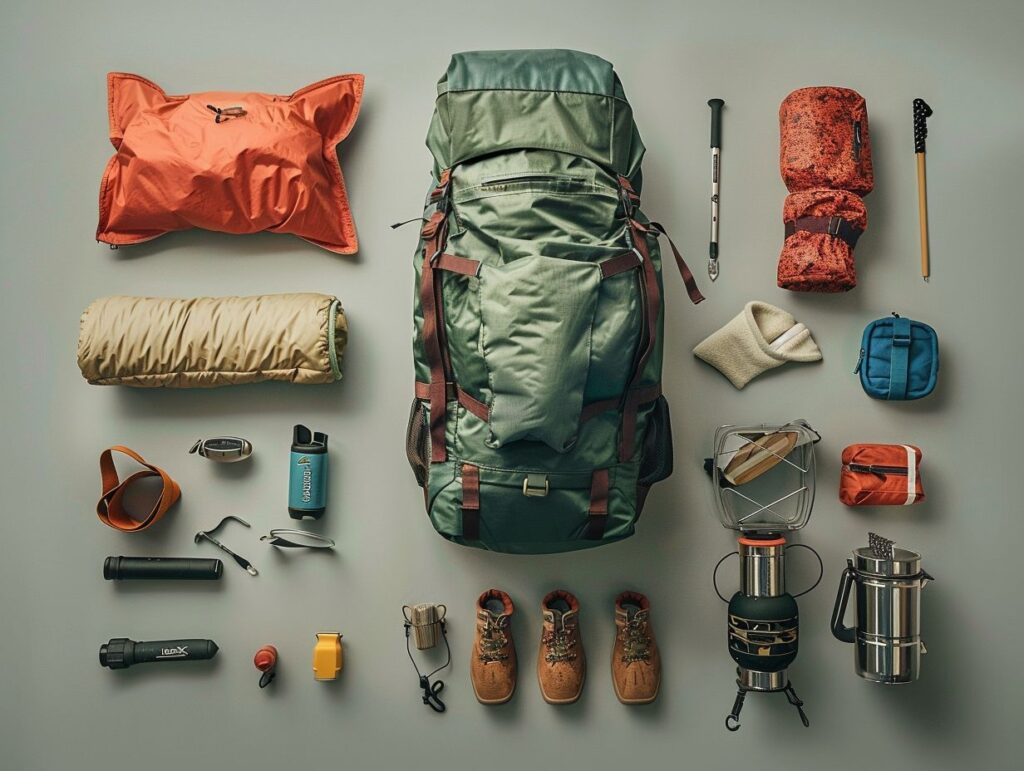Uncategorized
Camping Gear for Solo Adventurers: What to Pack
Embarking on a solo camping trip is an exhilarating experience that combines the thrill of self-reliance with the beauty of nature. Whether you are trekking through remote forests, hiking mountains, or camping by a serene lake, the right gear is essential to ensure a safe, comfortable, and enjoyable adventure. But what exactly should you pack for your solo journey?
In this guide, we’ll break down the key camping gear you need to bring along for your solo adventure. From the basics to specialized equipment, here’s your ultimate packing list to ensure you’re prepared for everything the wilderness throws your way.
1. Backpack
The foundation of your camping gear starts with a good backpack. For solo adventurers, a comfortable, durable, and lightweight backpack is crucial as it will carry all your essentials. When choosing a backpack, consider the following:
- Capacity: A 40-60 liter pack is ideal for a solo trip. It’s big enough to carry your gear but not so large that it becomes cumbersome.
- Fit: Look for an adjustable backpack that fits snugly to your body. A well-fitted backpack prevents back strain and makes carrying your load more comfortable.
- Pockets & Compartments: Choose a backpack with multiple compartments for easy organization of gear.

2. Shelter: Tent, Tarps, and Ground Mat
When camping solo, the right shelter is key to a safe and comfortable trip. Here’s what you’ll need:
- Tent: A lightweight, easy-to-pitch tent is essential for solo campers. Look for a 1-person tent that is waterproof, breathable, and has good ventilation. Consider features like vestibules for extra gear storage and durable poles for stability in harsh weather conditions.
- Tarps: A rain tarp or emergency shelter can provide extra protection in case of unexpected weather.
- Ground Mat: A ground mat or footprint will protect your tent floor from damage and provide extra insulation from the cold ground.
3. Sleeping Gear
Getting a good night’s sleep is crucial when you’re out in the wilderness, especially when solo camping. Here’s what you’ll need for sleeping:
- Sleeping Bag: Choose a sleeping bag rated for the temperatures you’ll encounter. A 3-season sleeping bag is a versatile option for most conditions.
- Sleeping Pad: An inflatable or foam sleeping pad will add comfort and insulation from the cold ground. It also helps to protect your sleeping bag from moisture.
- Pillow: While a small travel pillow or stuff sack filled with clothes works in a pinch, a compact inflatable pillow offers better comfort.
4. Cooking Gear
Solo campers need efficient cooking gear that’s lightweight and compact. Here are the essentials for cooking on the go:
- Stove: A portable camp stove is perfect for solo campers. Consider a small but powerful stove that can boil water quickly and cook meals efficiently. Options include canister stoves, alcohol stoves, and multi-fuel stoves.
- Cookware: A small pot, pan, or kettle, along with a lightweight utensil set, is all you need for cooking on your own. Collapsible or nesting cookware is great for saving space.
- Food Storage: Lightweight food storage containers and a bear-proof bag (if camping in bear country) are important to keep your food fresh and protected.
5. Water Filtration System
Access to clean water is a priority when camping solo. Carry a reliable water filtration system to purify natural water sources:
- Water Filter: A portable water filter or purification tablet is a must-have for solo adventurers. Many filters are lightweight, easy to use, and can remove bacteria and protozoa from water sources.
- Water Storage: A collapsible water bottle or hydration reservoir ensures you always have enough water on hand during your hikes and campouts.
6. Clothing for All Conditions
Clothing is one of the most important aspects of a successful camping trip, especially when camping alone. Be sure to pack layers to adapt to varying temperatures and weather conditions:
- Base Layer: Moisture-wicking, breathable fabric is essential for keeping sweat off your skin and regulating body temperature.
- Insulating Layer: A fleece or down jacket is perfect for cold mornings and nights.
- Outer Layer: A waterproof and windproof jacket will protect you from rain and wind.
- Hiking Boots & Socks: Good quality hiking boots that are broken in and comfortable are crucial for long hikes. Pair them with moisture-wicking socks to prevent blisters.
- Hat & Gloves: Depending on the season, a warm hat and gloves can make a huge difference.
7. Lighting
When camping alone, having a reliable light source is essential for navigating the campsite, cooking at night, or finding your way after dark:
- Headlamp: A lightweight, hands-free headlamp is perfect for solo adventurers. Choose one with adjustable brightness and long battery life.
- Lantern: If you prefer more ambient light, a small, battery-powered lantern can illuminate your campsite.
8. Navigation Tools
Even if you are familiar with the area, carrying navigation tools is essential for solo camping:
- Map & Compass: Always bring a physical map of the area and a compass, even if you have GPS on your phone. These tools are reliable when technology fails.
- GPS Device: A handheld GPS unit can be a great backup in case you lose service or your phone dies. It’s especially useful for hiking in remote areas.
9. Emergency & First Aid Kit
Solo adventurers need to be prepared for any emergencies. A well-stocked first aid kit is essential for treating injuries and staying safe:
- First Aid Kit: Make sure your first aid kit includes bandages, antiseptic wipes, pain relievers, blister treatment, tweezers, and any personal medications.
- Emergency Whistle: In case you get lost or need help, an emergency whistle can be heard from a great distance.
- Multi-tool: A small multi-tool with knife, pliers, and screwdriver can be invaluable for making camp repairs or handling other tasks.
10. Personal Items & Extras
Lastly, don’t forget some personal essentials that will make your solo camping trip more enjoyable and comfortable:
- Sunscreen & Bug Repellent: Protect your skin from UV rays and insects, especially in areas with a lot of mosquitoes or ticks.
- Toiletries: Bring compact, eco-friendly toiletries like biodegradable soap, a toothbrush, and toilet paper.
- Camera or Journal: Document your solo adventure with a camera or a journal to capture memories.
Conclusion
Solo camping is a rewarding experience that allows you to connect with nature, push your limits, and enjoy solitude. However, it’s important to pack the right gear to ensure your safety and comfort throughout your trip. From a reliable backpack and shelter to navigation tools and emergency supplies, the items listed above will set you up for success on your solo adventure.
By packing thoughtfully and efficiently, you can enjoy all the peace and beauty that solo camping has to offer—while being prepared for whatever nature may throw your way. Happy adventuring!

